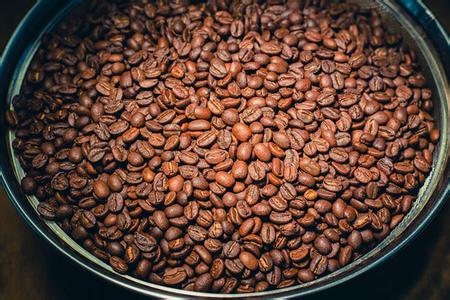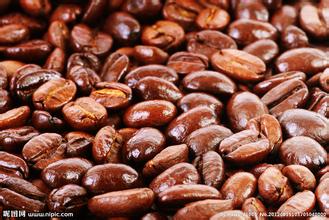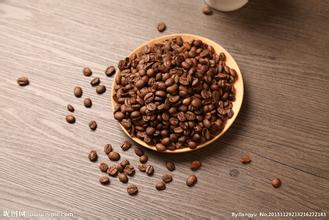Introduction of Arabica Coffee Price characteristics, Flavor description, Taste treatment method and Variety producing area
Introduction of Arabica Coffee Price characteristics, Flavor description, Taste treatment method and Variety producing area
Arabica is deeply loved by Chinese people with a short history of coffee contact because of its strong fruity aroma. it was introduced to China by missionaries in the 19th century and widely planted in Panzhihua, Sichuan, and the dry-hot valley of the Jinsha River above 1000 meters in western Yunnan. The sunshine in this area lasts for a long time and there is a great temperature difference between day and night. The local people solve the problem of insufficient seasonal rainfall by diverting water up the mountain, resulting in a unique aroma of "Chinese coffee". Among them, Banpo coffee grown in Arabica in Panzhihua, Sichuan is the most. Compared with Yunnan and Hainan, Panzhihua in the dry-hot valley has longer sunshine, higher altitude, greater temperature difference, good light quality and more virgin land. it is a rare and most suitable area for growing Arabica coffee. Banpo coffee farmers take advantage of this advantage to adopt unique planting and processing technology: first, "do not land on the ground": from collecting coffee beans to processing into finished products, coffee has been kept free from soil and other sundries to ensure its taste and quality; second, "graded collection": since coffee beans are not uniform and mature, coffee beans of the same level are collected centrally rather than mixed together. Such as manual operation, the use of a large number of labor force to collect, classify and process. The coffee here is rich in aroma, balanced between sour and bitter, and fruity. It is very popular with consumers and foreign coffee beverage giants.
It turned out that all the commercial coffee in the world was small-grain coffee, but it was only at the end of the 19th century that growers began to look for other disease-resistant varieties because of the collapse of a large number of coffee farms caused by leaf rust.
Small-grain coffee is still the most important coffee variety, accounting for about 3% of the world's total coffee production. It is mainly grown in Latin American countries, but also partly in Indonesia and the Pacific islands. The geographical and climatic conditions of Brazil, the largest coffee producer in the world, are very suitable for the growth of small-grain coffee, and the main coffee varieties planted are also small-grain coffee. Brazil's coffee production accounts for more than 1% of the world's total output.
Good Arabica? Coffee requires a complicated process of hand picking, selection and fine processing, so are the most expensive and best coffee beans in the world? Arabica? Grow coffee. Robusta? Caffeine is low-cost and is usually used to produce instant coffee and canned coffee. A few of the better ones? Robusta? Grown coffee is also used in blending (mixed with Arabica coffee) espresso beans.
There is an important difference in other differences: the amount of caffeine. Robusta? The caffeine content of coffee is about? Arabica? Twice as much coffee, which is why drinking some canned coffee is prone to palpitations and insomnia.
Have you seen so much? Arabica coffee? With? Robusta coffee? Finally, it must be emphasized that:
Arabica coffee? It's not the same? Good coffee? Robusta? It's not absolutely cheap coffee!
Arabica coffee accounts for 75% of the world's coffee output, and the quality of Arabica coffee varies greatly, from good to bad. In recent years, a few countries (such as India) have devoted themselves to improving the quality of robusta coffee. They have planted robusta in high altitude areas, given the most careful care, and carefully washed the coffee. As a result, they have got very high-quality robusta coffee beans! Top Robusta beans are not cheap either, getting rid of the old impression that Robusta are cheap beans! So the quality of coffee beans is no longer good or bad. Is it Arabica beans? This crude and outdated ancient standard of judgment is judged.

Important Notice :
前街咖啡 FrontStreet Coffee has moved to new addredd:
FrontStreet Coffee Address: 315,Donghua East Road,GuangZhou
Tel:020 38364473
- Prev

Introduction to the flavor description of Italian espresso produced by regional treatment method
Italian espresso Flavor description A small cup of coffee dominates coffee drinking habits all over the world. It can become latte, cappuccino, mocha, macchiato and so on. At present, there are more than 10, 000 kinds of espresso recorded, so Espresso (espresso) is a popular coffee drink in the world.
- Next

The part of espresso that needs to be washed frequently is washed with the head.
The part of Italian coffee that needs to be washed frequently is to clean the coffee residue from the brewing head, which can separate the filter net and the copper block on the brewing head. The filter net is the part that comes into direct contact with the coffee powder every time you brew the coffee. Because the coffee powder is pressed, the coffee liquid will flow out of the powder bowl only when it is pressed to a certain extent, so before it oozes out.
Related
- Beginners will see the "Coffee pull flower" guide!
- What is the difference between ice blog purified milk and ordinary milk coffee?
- Why is the Philippines the largest producer of crops in Liberia?
- For coffee extraction, should the fine powder be retained?
- How does extracted espresso fill pressed powder? How much strength does it take to press the powder?
- How to make jasmine cold extract coffee? Is the jasmine + latte good?
- Will this little toy really make the coffee taste better? How does Lily Drip affect coffee extraction?
- Will the action of slapping the filter cup also affect coffee extraction?
- What's the difference between powder-to-water ratio and powder-to-liquid ratio?
- What is the Ethiopian local species? What does it have to do with Heirloom native species?

